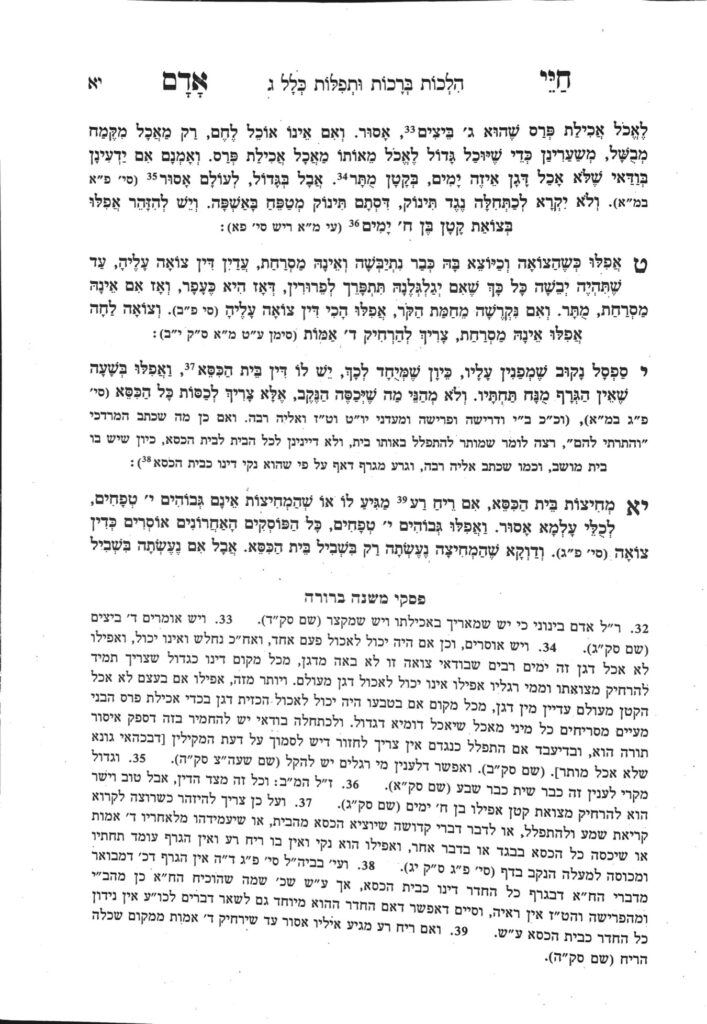We are continuing in siman 11, discussing the walls of a beis hakisei. The Chayei Adam writes that even if the beis hakisei has not been used yet, once a room has been designated as a beis hakisei, it becomes assur to learn or daven in that room. For example, if one is building a house, and designates a room to be a beis hakisei, even if they have not yet installed the toilet or plumbing, the room already assumes the status of a beis hakisei. (This issur is derabanan.) The Mishnah Berurah writes that although it is assur to learn or daven in such a room, hirhur (thinking in learning) is muttar in that room, as opposed to a beis hakisei which is already in use, where hirhur is assur.
On the other hand, if one has a room which they no longer wish to use as a beis hakisei, in addition to removing the toilet, etc., from the room, they have to do a deliberate action to change the room, or else it maintains its status as a beis hakisei.
It is important to note that if one is renovating their home and replacing toilets, if they place the old toilet outside or on the lawn for a garbage pickup, people cannot speak or think in Torah within four amos (if it is to the side or behind them) or within eyesight (if it is in front of them), as we have learned previously (shiur 1511). Similarly, people must be aware how these distances apply to portable toilets.
The Chayei Adam moves on to discuss the halachos of a merchatz. These halachos do not apply as much nowadays, with the exception of a mikvah. If the mikvah has showers, the heat generated combines with the zuhama (sweat and body grime) of the people present, and the room has the halachic equivalent of a beis hakisei.
The Chayei Adam writes that there are generally three areas to a merchatz. The first is the outer area, where people are fully clothed. In such an area, one is allowed to think and speak in torah as usual. In the innermost area, where people are not clothed at all, it is assur to speak or think in torah. In the middle area, some people are clothed and some are not. In that area, it is assur to speak in learning, but one may think in learning, even in front of ervah. Additionally, one can greet another person with the greeting Shalom. Shalom is one of Hashem’s names, and generally cannot be spoken in any of the places where it is assur to think or speak in learning or davening. However, the Chayei Adam holds that in the middle area of a merchatz it is muttar.
The Chayei Adam explains that it is muttar to think in learning in the middle area of a merchatz because, unlike tzoah, when it comes to ervah, the issur is only to speak in learning. The pasuk says v’lo yireh bechas ervas davar, which Chazal learn to mean that its only dibbur which is assur, but hirhur is muttar.
Although the Chayei Adam writes that it is muttar to say Shalom in this middle area, arguably one should refrain from saying Shalom directly in front of someone who is not clothed.
The Chayei Adam next discusses the issue of reiach rah, a bad smell, which we will discuss in the upcoming shiurim, be’ezras Hashem.
Summary
- Once a room has been designated as a beis hakisei, it assumes the halachic status of one, even if it has not yet been used for its designated purpose. However, one may think in learning in that room until it is actually used as a beis hakisei.
- If one has a room which they no longer wish to use as a beis hakisei, they must do a deliberate action to remove the room’s status.
- There are three areas to a merchatz:
- The inner room, where people are unclothed. It is assur to talk or think in learning;
- The outer room, where people are clothed. It is muttar to talk or think in learning or davening;
- The middle room, where some people are clothed and some are not. It is assur to speak in learning, but muttar to think in learning. It is also muttar to greet someone with Shalom, but preferably not directly in front of ervah.



